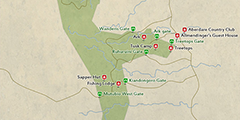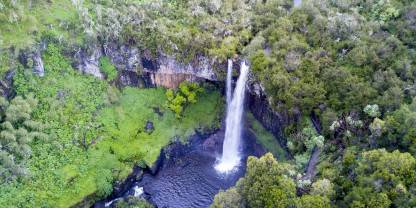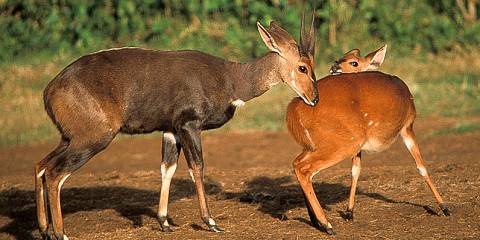Aberdare National Park promises an experience unlike anywhere else in Kenya. The dense mountain forests of the Aberdares have a rich history, with the caves and forests here a refuge for Mau Mau rebels during colonial times. More recently, the park’s elevated tree hotels allow you to observe wildlife coming to (or ) in pristine forest habitat without even leaving your room. It’s a remarkably rewarding way to see animals that are otherwise difficult to spot in the dense vegetation.

-
Best Time To Go
- June to September and December to February (Driest months)
-
High Season
- June to October and December to March
-
Size
- 765km² / 295mi²
-
Altitude
-
1,952-4,001m /6,404-13,127ft
 View Photos
View Photos
 View Photos
+24
Photos
View Photos
+24
Photos
 Open Map
Open Map
Pros & Cons
- Enjoy wildlife viewing in beautiful forest and habitats
- Tree hotels offer an unusual wildlife-watching experience
- A chance to see hard-to-find animals
- Exciting animal encounters at ground level from a wildlife
- Great photo opportunities
- Guided hiking is available
- Tree hotels get busy, especially during high season
- Standard one-night stays have a very packaged feel
Wildlife
Four of the (no lions) are present but most are hard to see. Buffalo and elephant are common, and you might sometimes spot at one of the tree hotel at night. Leopard are rarely seen. Especially hard to find are the . If you see the very rare, shy , you’ve hit the jackpot. are a real treat. and are common.
More about Aberdare's wildlifeScenery
The cool, green forests of Aberdare National Park are a completely different world to the East African for which Kenya is famous. These forests provide animal habitat and also envelop the park’s hotels. The dense forests include, at higher altitude, and set among steep ridges with splendid waterfalls and river valleys.
Activities
are possible but require patience if you’re to see the birds and wildlife that inhabit the forest. Take time to allow your eyes to adjust to the dim forest light. You can also hike along forest trails, which is a fantastic way to explore the park.
Weather & Climate
Aberdare’s proximity to the equator means that temperatures don’t change much from month to month. It can, however, get really cold at higher altitudes. Temperatures also plummet in the Dry season (June to September), especially at night and early in the morning. Rain is a constant companion in the park, though more frequently in the Wet season (October to May), and the general dampness makes it feel even colder.
More about the weather and climateBest Time To Visit
Wildlife watching is good in Aberdare year-round. If you don’t intend to venture far from a tree hotel, visit in the Wet season (October to May) when low-season rates and vacancies make wildlife viewing from your balcony extra enjoyable. Otherwise, avoid the heaviest of the park’s rainfall by visiting in the drier months (from June to September and December to February) when local roads are easier to navigate.
More about the best time to visit



